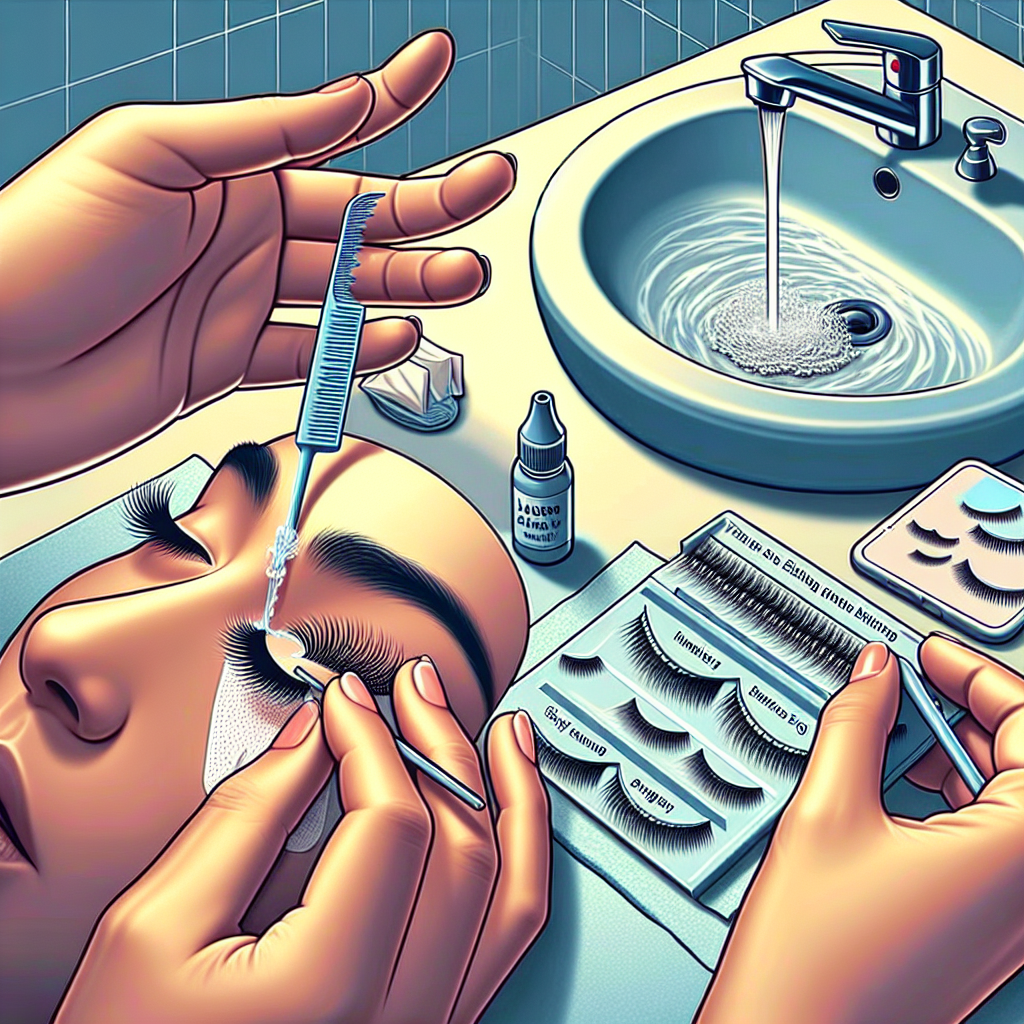If you’ve ever had the dream of fluttery, long lashes, you’re probably familiar with lash adhesives. While these beauty products have the power to transform your look, occasionally they can also trigger unwanted reactions. Don’t panic – in this article, we’ll guide you through what to do if you find yourself experiencing a reaction to lash adhesive. From identifying the symptoms to seeking the appropriate remedies, we’ve got you covered.
Signs and symptoms of a reaction to lash adhesive
If you experience a reaction to lash adhesive, there are certain signs and symptoms to look out for. These may include redness and swelling around the eye area, itching and irritation, a burning or stinging sensation, watery eyes, crusting or flaking of the eyelid, and pain or discomfort. It’s important to recognize these symptoms and take appropriate action to alleviate the reaction.
Immediate steps to take
When you notice a reaction to lash adhesive, there are immediate steps you can take to help reduce the discomfort and minimize further irritation. Firstly, remove the lash extensions to relieve any additional strain on the affected area. Avoid rubbing or scratching the area, as this can exacerbate the reaction and potentially cause more damage. Gently cleanse the eyes and eyelids with a mild, fragrance-free cleanser to soothe the skin. Applying a cold compress can help reduce swelling and inflammation. It’s also crucial to avoid using any makeup or cosmetics on the affected area to prevent further irritation. Lastly, it’s advisable to consult a professional, such as an ophthalmologist or an aesthetician experienced in lash extensions, for further guidance and assistance.

Home remedies to alleviate the reaction
In addition to immediate steps, there are several home remedies that can help alleviate the reaction to lash adhesive. Rinsing the affected area with a saline solution can help cleanse the eye and remove any residual adhesive that may be contributing to the irritation. Applying aloe vera gel, known for its soothing and healing properties, can provide relief and promote skin recovery. You can also use cucumber slices or chilled tea bags as cold compresses to reduce swelling and inflammation. Another option is to apply a cold milk compress, as milk can help calm irritated skin. Over-the-counter hydrocortisone cream can be used to alleviate itching and redness. These remedies can provide temporary relief, but it’s important to consult a professional if the symptoms persist or worsen.
Seeking medical attention
While many reactions to lash adhesive may be mild and resolve with home remedies, there are certain situations where seeking medical attention is necessary. If your symptoms persist or worsen despite home remedies, it’s essential to consult a healthcare professional. Severe swelling or difficulty breathing are serious symptoms that require immediate medical attention. Additionally, if you notice signs of infection, such as eye discharge or pus, it’s important to see a doctor as soon as possible. Blurred vision is also a concerning symptom that should not be ignored. Seeking medical attention promptly can help prevent further complications and ensure appropriate treatment.

Preventing future reactions
To avoid future reactions to lash adhesive, there are several preventive measures you can take. Firstly, it’s crucial to patch test before every lash extension application. This involves applying a small amount of adhesive to a less visible area of your skin, such as the forearm, and monitoring for any adverse reactions for at least 24 hours. Choosing a reputable and experienced lash technician is also important, as they will be skilled in proper application techniques and use high-quality products. Communication is key – make sure to inform your lash technician of any known allergies or sensitivities you have. Opting for hypoallergenic and formaldehyde-free adhesives can also help minimize the risk of a reaction. Lastly, following the aftercare instructions provided by the technician is essential for maintaining healthy lashes and reducing the likelihood of a reaction.
Consulting an allergist or dermatologist
If you frequently experience reactions to lash adhesive or if your reaction persists despite taking preventive measures, it may be beneficial to consult an allergist or dermatologist. They can perform tests to identify specific allergens that may be triggering the reaction. Additionally, they can evaluate your skin for underlying conditions that may contribute to the sensitivity. Based on their findings, they may be able to recommend alternative lash glue options that are less likely to cause a reaction. In some cases, prescription or over-the-counter medications may be prescribed to provide relief from symptoms.

Long-term effects and complications
Ignoring or neglecting a reaction to lash adhesive can lead to long-term effects and complications. Hyperpigmentation or scarring may occur if the reaction is severe or if the skin is repeatedly subjected to irritation. Eyelash loss or damage can happen if the extensions are improperly removed or if the reaction causes breakage. Chronic inflammation or increased eye sensitivity may persist, making future lash extension applications challenging. There is also a risk of secondary infections if the affected area is not properly cared for. Beyond the physical effects, the psychological impact of a reaction to lash adhesive should not be underestimated. It can lead to self-consciousness, decreased confidence, and reluctance to undergo future lash extension procedures.
Educating lash technicians and clients
In order to prevent reactions and ensure the safest possible experience for clients, it is essential to educate both lash technicians and clients. Lash technicians should undergo proper training and certification to gain the necessary knowledge and skills to perform lash extension procedures safely. They should be able to recognize the signs of a potential reaction and advise clients on aftercare and warning signs to watch out for. Promptly addressing any adverse reactions that may occur is crucial to minimize discomfort and prevent further complications. Staying updated on safe adhesive ingredients and industry practices is also important to ensure the highest standard of care.

Legal considerations and recourse
In the unfortunate event that a reaction to lash adhesive leads to significant harm or damages, it may be necessary to explore legal options. Product liability and consumer rights come into play, and it’s essential to understand your rights and responsibilities as a consumer. Reporting incidents to the relevant authorities, such as the manufacturer or regulatory agencies, can help raise awareness and potentially prevent similar incidents from happening in the future. Seeking compensation for damages, such as medical expenses or emotional distress, may be possible through legal avenues. Documenting evidence of the reaction, including photographs, medical records, and correspondence, serves as vital documentation for any potential legal proceedings. Consulting a personal injury attorney can provide guidance and support throughout the process.
Conclusion
Experiencing a reaction to lash adhesive can be distressing, but taking the appropriate steps can help alleviate symptoms and prevent further complications. Recognizing the signs and symptoms of a reaction, promptly removing the extensions, and following proper aftercare are crucial. Home remedies can provide temporary relief, but seeking medical attention is necessary if symptoms persist or worsen. Preventive measures, such as patch testing, choosing a reputable technician, and adopting hypoallergenic adhesives, can help minimize the risk of future reactions. Consulting an allergist or dermatologist may be necessary for persistent reactions. Long-term effects and complications can occur if reactions are not addressed. Educating lash technicians and clients is essential for safe practices. Legal considerations may arise in cases of significant harm, and consulting a personal injury attorney can provide guidance. By being proactive and well-informed, you can navigate and address a reaction to lash adhesive effectively.

